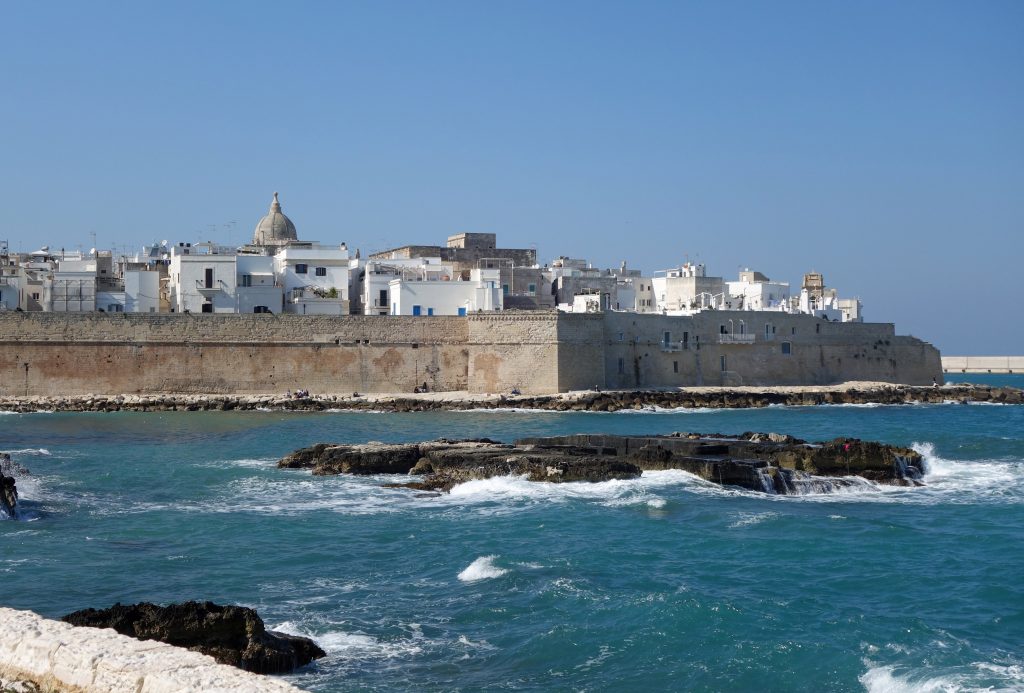
The beach town of Monopoli is not on the list of popular destinations in Puglia (pronounced pool-ya) but we chose to stay here for our first visit to the region because of its proximity to places we wanted to visit. Puglia’s famed 800km coastline on the Adriatic Sea is the longest of all the mainland regions of Italy, it’s also typically windy along the coast. We had wind warnings the first two days we were here and the sea was very rough, keeping the smaller fishing boats safely anchored in the port. Agriculture is prominent in this region including vineyards, but the big crop is olive trees, 50 to 60 million trees produce 40% of Italy’s olive oil.
Lecce, just over an hour south of Monopoli, is bursting with baroque architecture and 17th century highly decorative buildings at every turn. The main gate to the historic centre is called Porta Napoli and was built in 1548, modeled on a Roman triumphal arch. Passing through the gate, the old town center is a wonderful setting for strolling the narrow streets of golden sandstone. The Basilica di Santa Croce was probably the highlight of our visit with its baroque period detailed pillars and extravagantly carved exterior. The level of detail is quite stunning and took over 200 years to complete before it was finally opened in 1695. The Roman Amphitheatre built in the second century BC was a little disappointing, not being as large and impressive as I had hoped. Only 2/3 of the site has been excavated but it would have held approx 25,000 spectators. Acting as the religious center of Lecce, the enclosed on three sides Piazza del Duomo houses the Lecce Cathedral, the bishop’s residence, the seminary, and the bell tower. The bell tower was completed in 1662 soaring 5 stories above the piazza and topped with a beautiful majolica dome.
Alberobello was amazing!! This quaint town nestled in the Itria valley famous for its Trullo huts did not disappoint. What is a Trullo you ask?? A Trullo (Trulli is plural) is a traditional dry stone hut, meaning no mortar is used, built with large limestone slabs and a conical roof. This style of construction, shaped a bit like a beehive, is specific to the Itria valley and has likely been around here since the 4th century. This link gives a good explanation of the history behind the Trulli and why they were built this way. Trulli are traditionally whitewashed with the domed roofs left the natural grey stone color. The toppers on the roof are varied and used as the signature of the stonemason to identify their work. There are over 1,500 of these smurf-like buildings in Alberobello and we thoroughly enjoyed wandering the streets of this UNESCO World Heritage site. These days the Trulli mainly exist as souvenir shops, restaurants, and visitor accommodation rather than housing for residents. That being said, we wandered a few of the quiet back streets which are still obviously inhabited by locals. Tourism is huge here and it was the busiest place we have seen so far in Italy, after Rome, which is always busy. I was so enchanted by this town that I bought a souvenir!!! A beautiful hand-painted tile of Trulli which is small enough to be tucked away in a corner of my suitcase and not add much weight 😊
Taking a slight detour after Alberobello, we visited the whitewashed town of Locorotondo, which means “round place”. The old city center is perched on top of a hill and the views from there are gorgeous. There are no significant tourist sites here but wandering the narrow streets is delightful, and you never know what you might discover. When we entered the town we noticed dolls of old women hanging in the middle of the streets, how very strange!! Apparently, this doll is called a Quarandone and is hung up on Ash Wednesday for 40 days until Easter. This is a unique custom in Puglia, but one we only saw in Locorotondo. Interesting what we learn just by popping into a cute little town on the way home!! We went back to Locorotondo after our wine tasting a few days later and had lunch at a fabulous restaurant called Osteria del Rosone, in a tiny doorway and downstairs, you will find a most amazing restaurant serving regional dishes. Give it a try if you are in Locorotondo!
The beach town of Polignano A Mare lies just 12 km north of Monopoli and has all the right ingredients for a perfect day out. The 8,000-year-old town has charming white-washed streets with beautiful old churches. We found ourselves getting lost among the winding streets and unexpectedly popping out at one of the three panoramic terraces offering breathtaking views of the sea. Polignano A Mare is one of the most photographed spots on the Adriatic coast and is famous throughout the world for cliff diving. Crowds of up to 45,000 people gather here during the Red Bull Cliff Diving Competition to watch athletes spectacularly dive off the cliffs, some 92 ft high, into the blue Adriatic waters below. The best place to watch cliff diving is Lama Monachile beach, nestled between the cliffs, and one that has been awarded the prestigious Blue Flag beach award. While the cliffs are spectacular the beach is rocky and not what we consider a beach, but hey living in Cayman for 16 years has us spoiled as to what a beach should be 😎 We noticed a tremendous number of restaurants and shops so this must be a very popular place to visit in the summer months. Taking a break from our explorations we enjoyed a lovely lunch of pasta with seafood, we are on the sea after all.
While olive trees dominate the region there are a few wineries not far from Monopoli so we booked a tour and tasting at the I Pastini vineyard. This lovely vineyard is located between the small towns of Locorotondo, Martina Franca, Alberobello, and Ostuni, in the heart of the Itria Valley. Managed by the Carparelli family, the winery was established in 1996 and covers an area of 15 hectares. They produce approx 100,000 bottles of wine per year from native grape varieties of the region. It was a cold and windy day however our visit began with a tour of the vineyards, explaining the type of grape being grown and the optimum height of the vine for hand-harvesting of the grapes. From there we moved into the warehouse where the stainless steel vats age the wines then into the bottling and packaging area. Only one of their red wines is transferred to oak barrels for further aging in the basement. The tasting began with sparkling wine, followed by 2 whites and 2 reds. Every one of the wines was 100% a specific grape with no blending being done and of course, we leaned towards the reds and their Arpago Primitivo was quite outstanding. It has a distinct nose of coffee and chocolate, yummmmmm!! Primitivo is the most common and famous grape in the Puglia region and we have tried many over the past 10 days, but this one was interesting and worth buying a few bottles to enjoy at home.
We have enjoyed our time in Puglia however we are off to Tuscany, our favorite region of Italy…
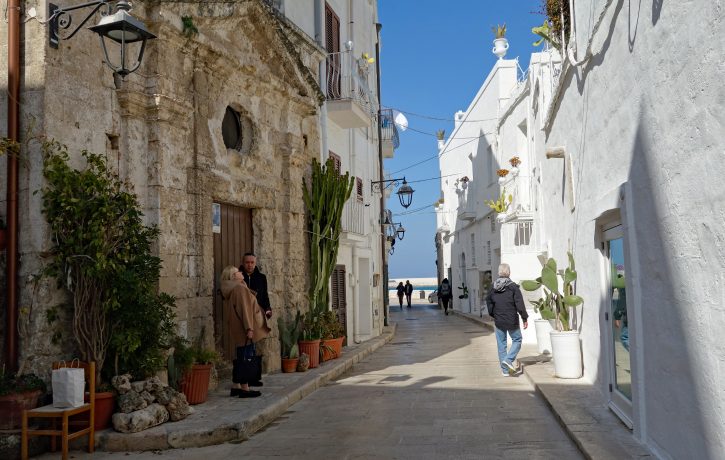
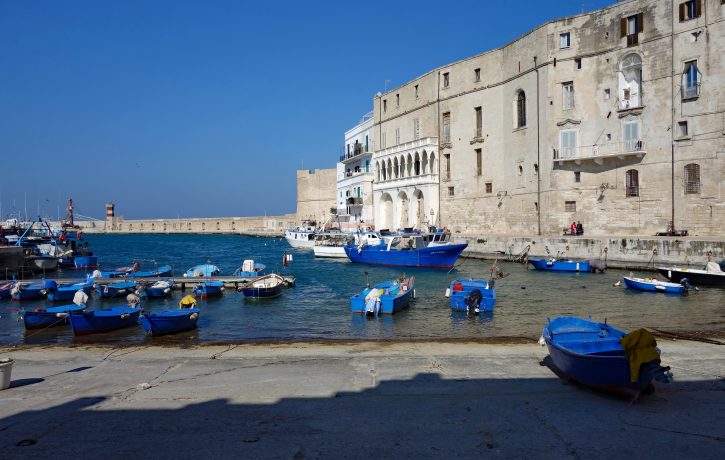
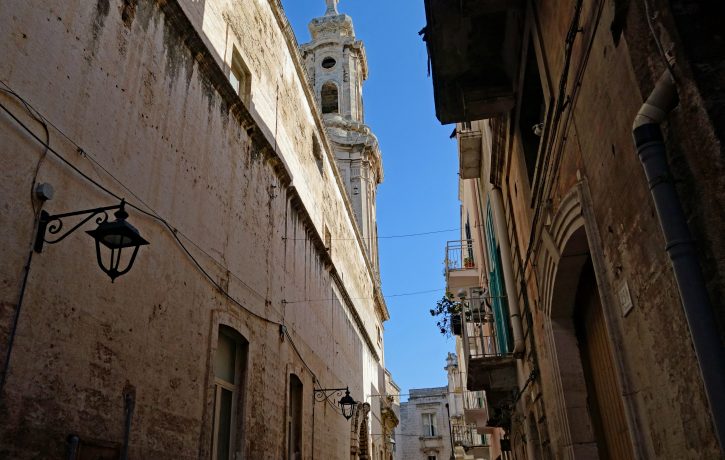
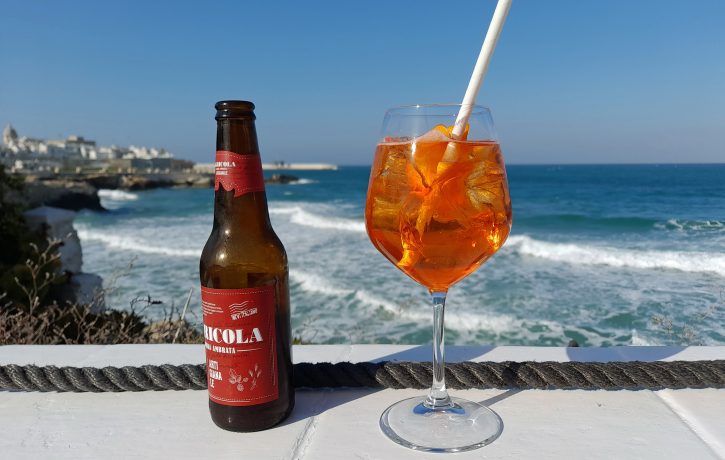
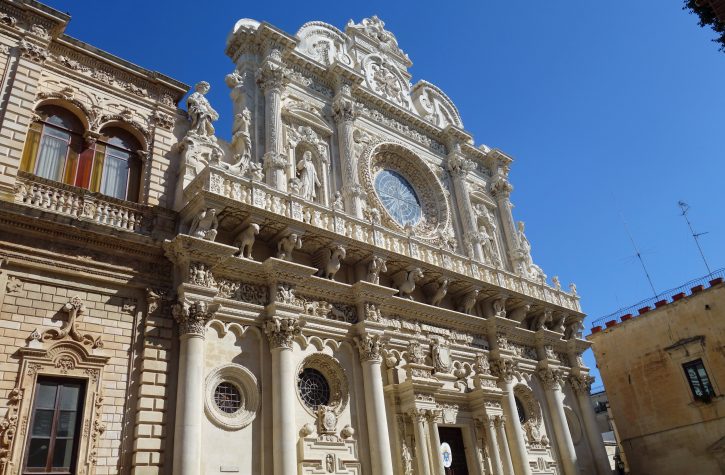
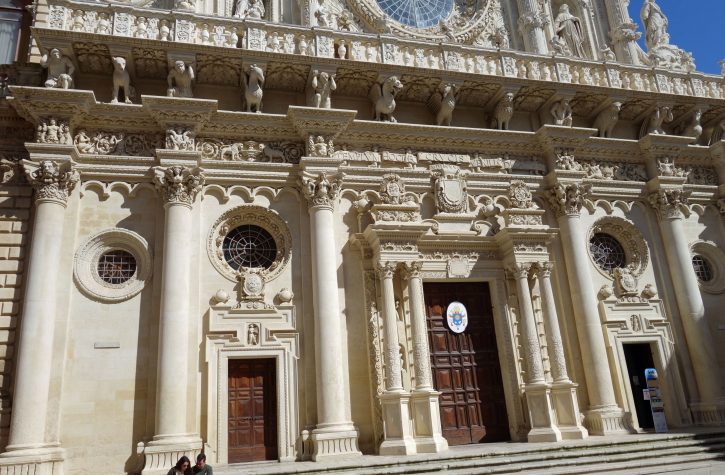
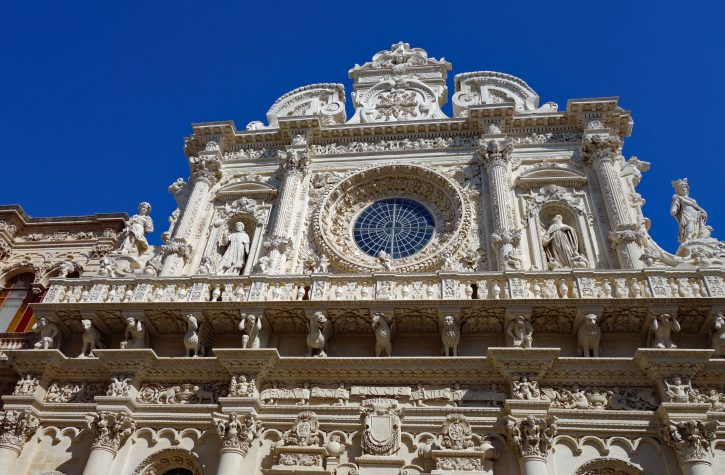
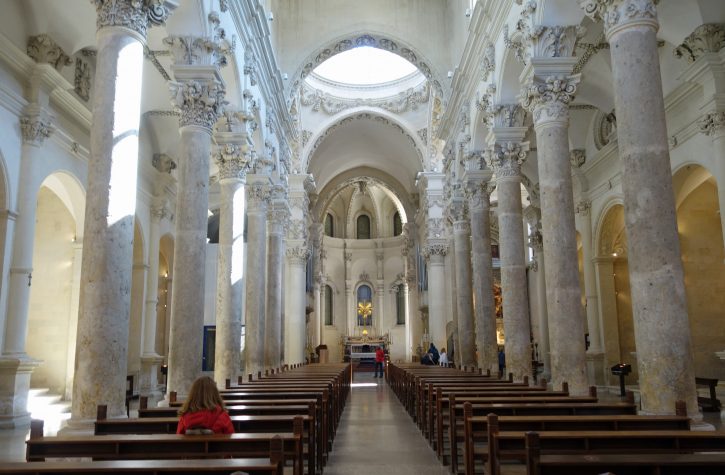
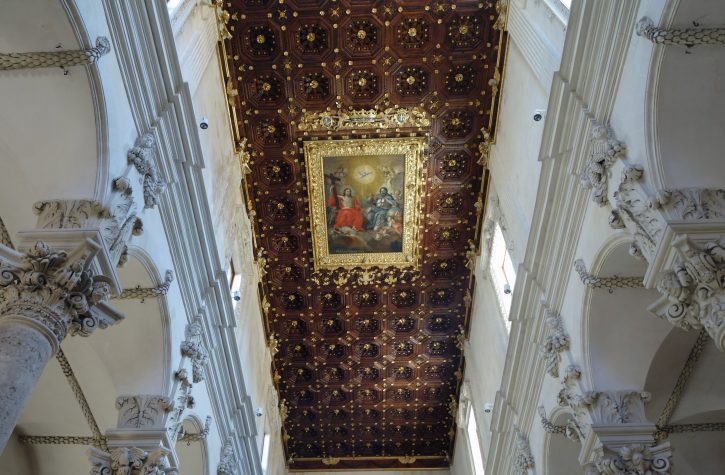
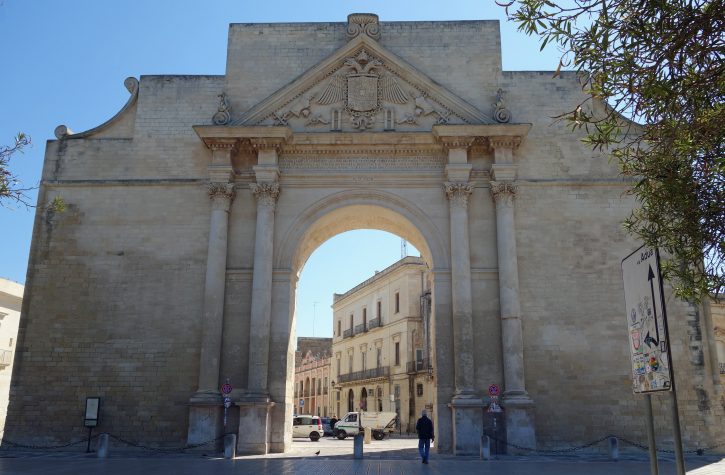
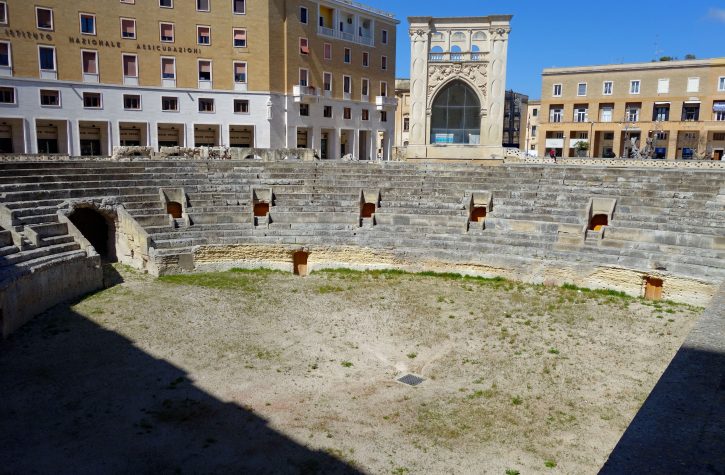
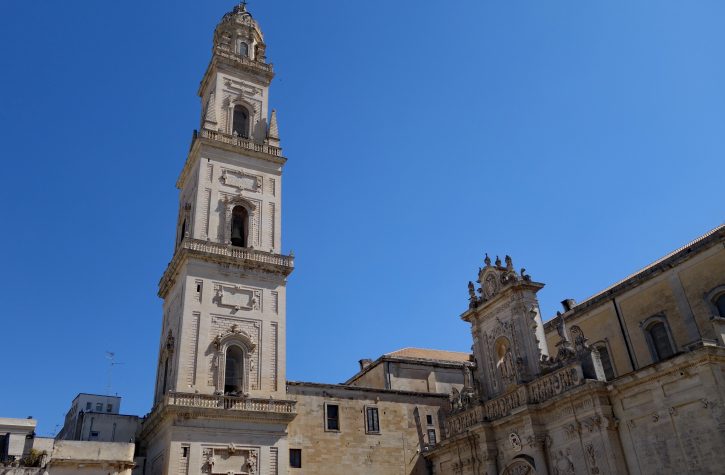
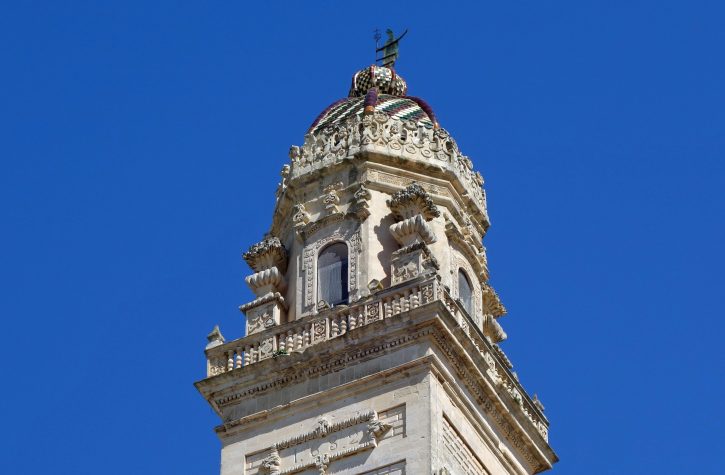
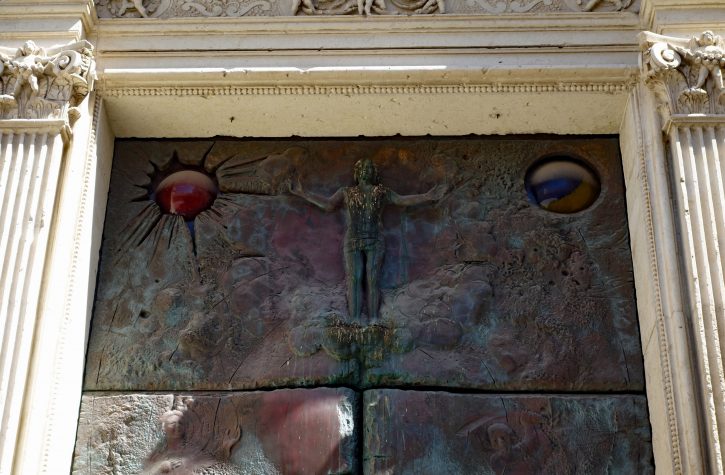
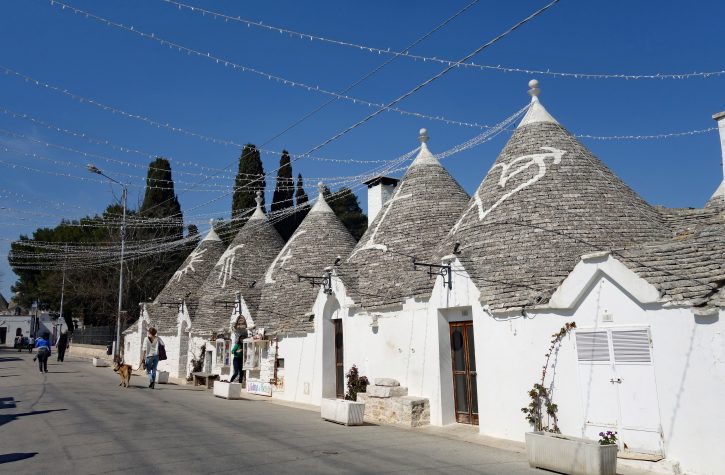
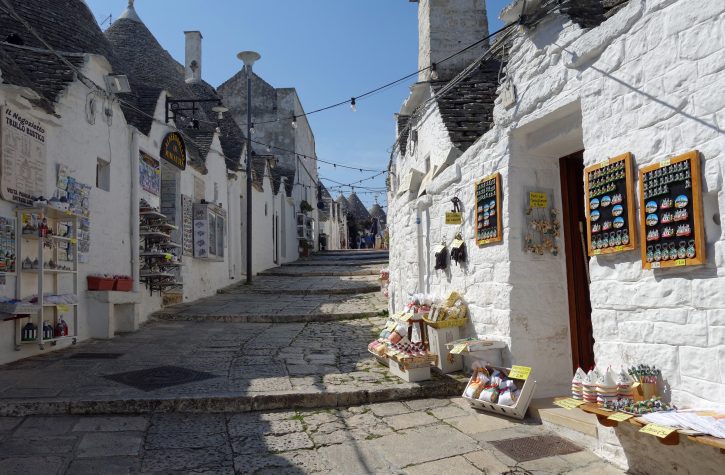
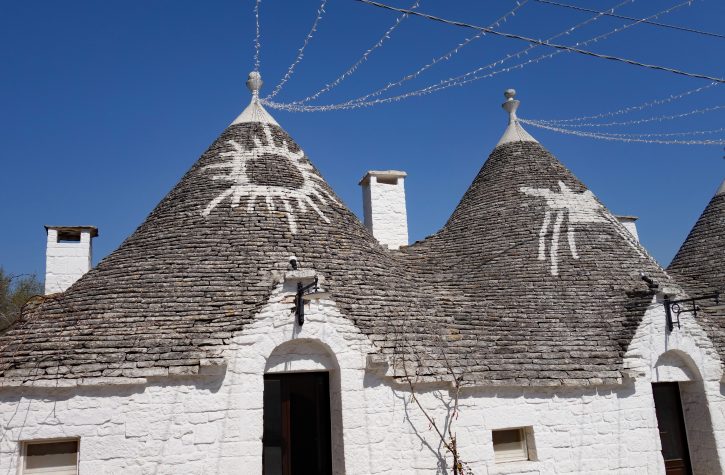
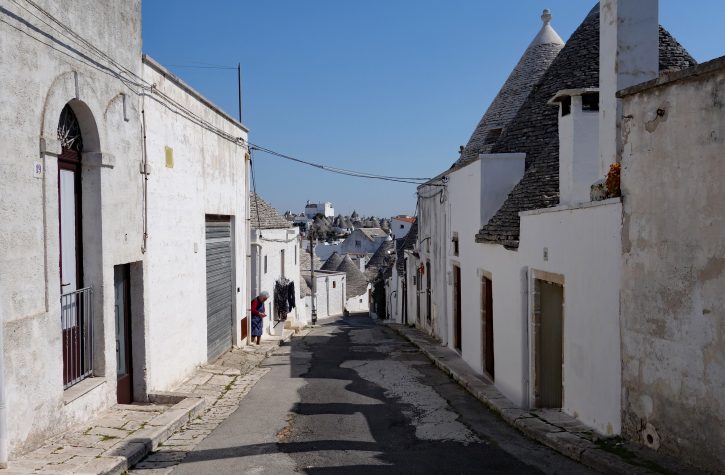
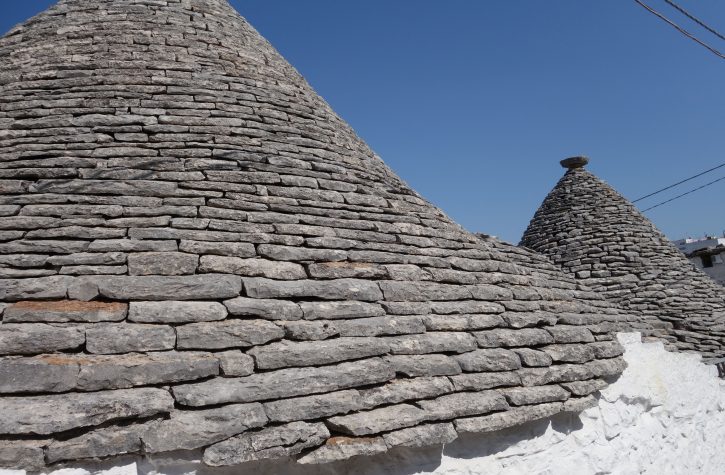
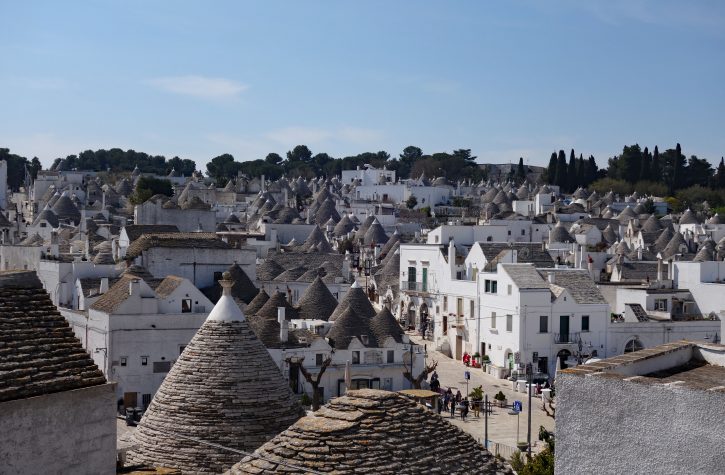

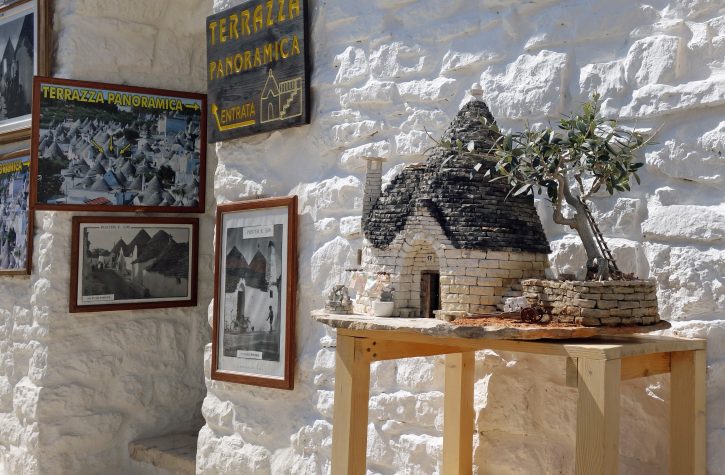
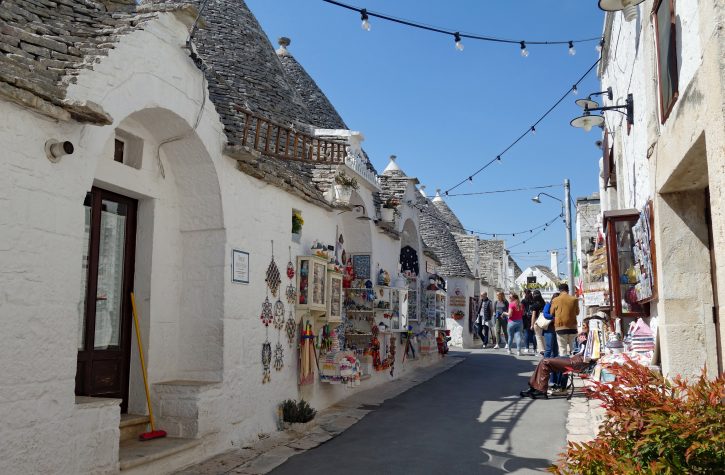
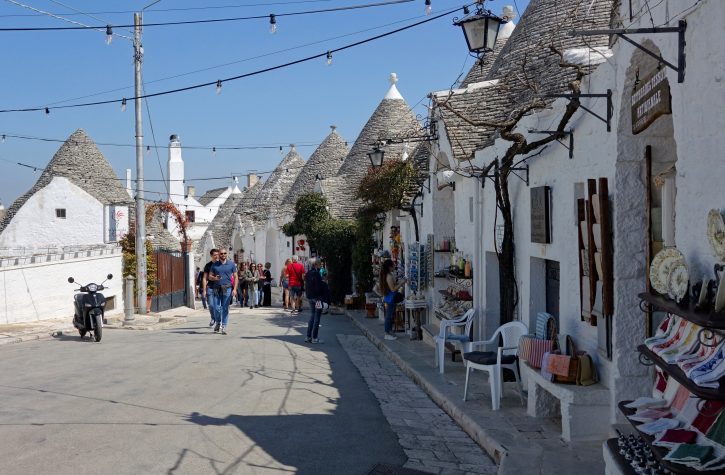
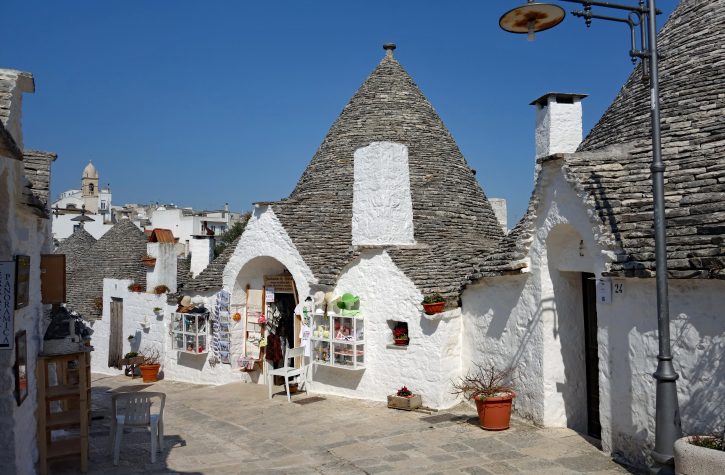
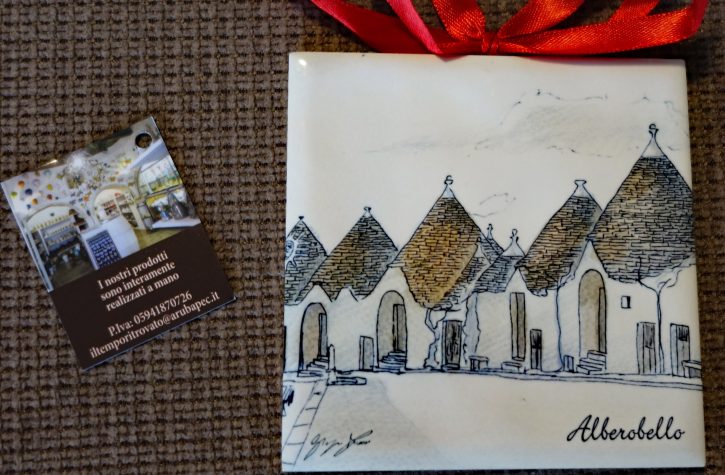
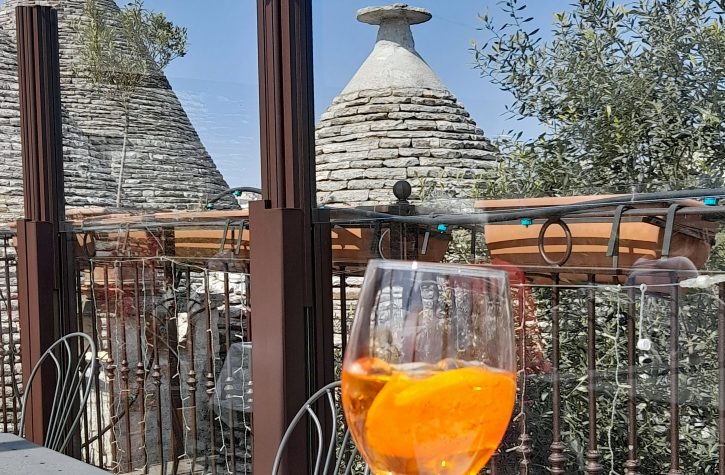
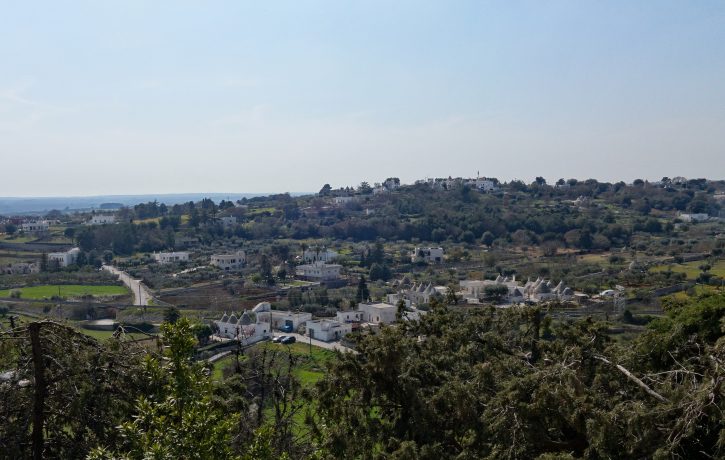
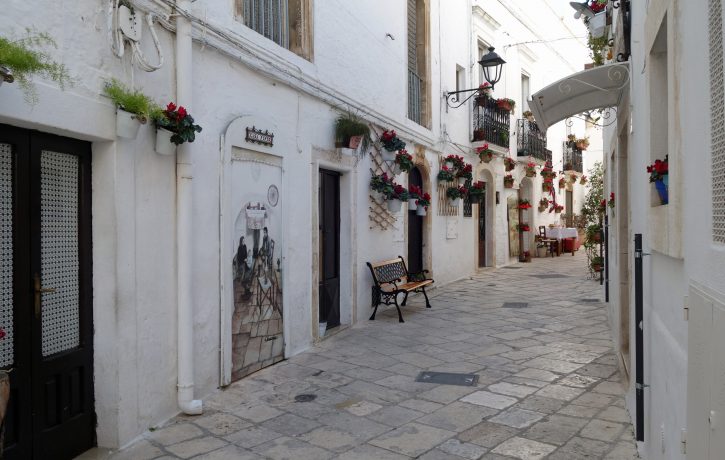
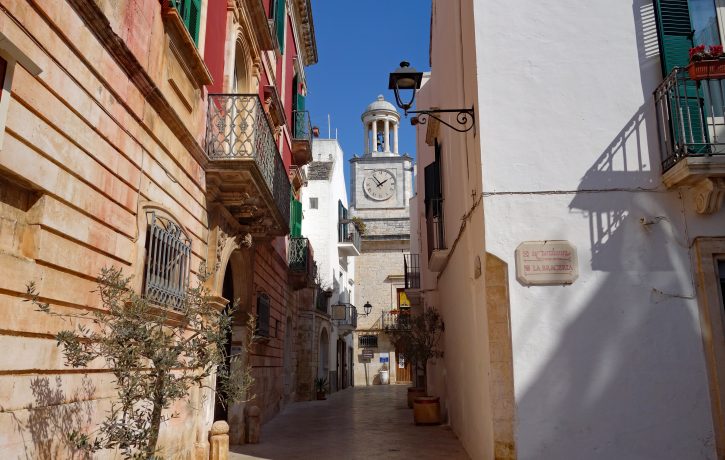
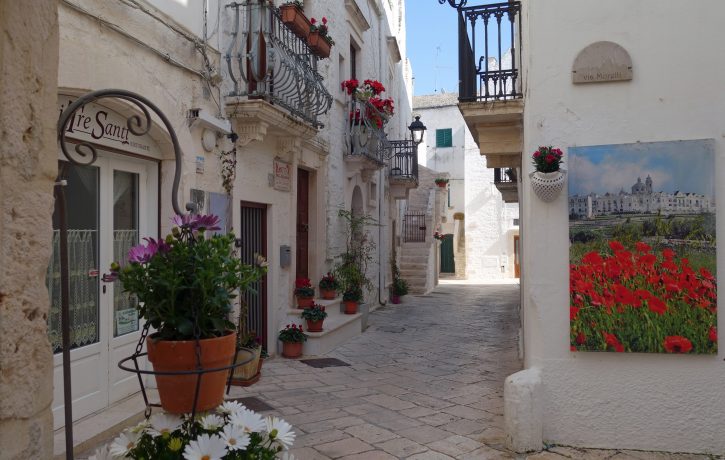
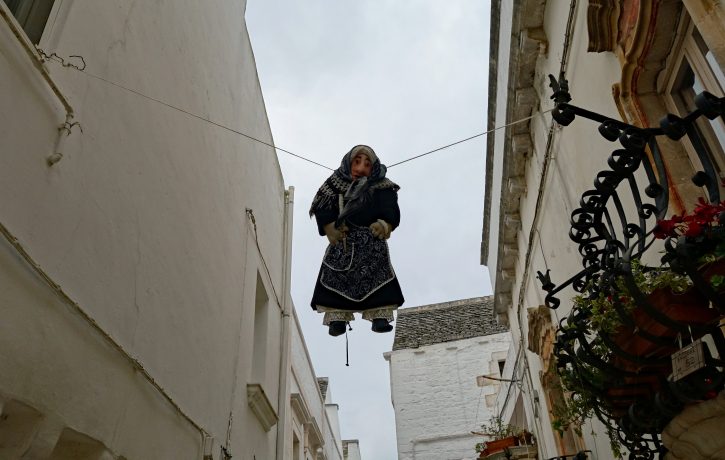
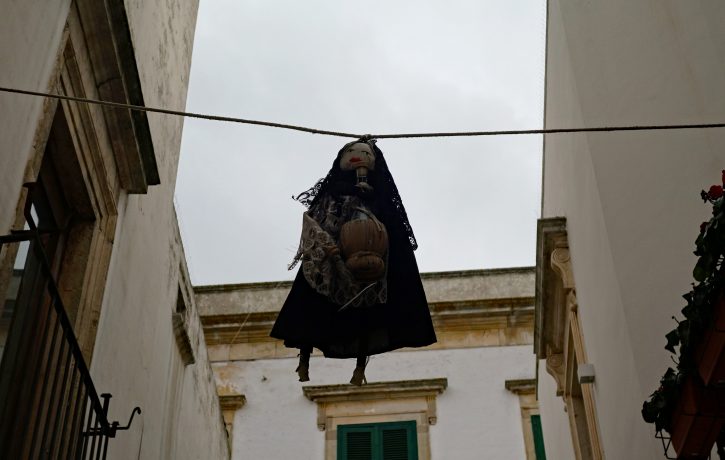

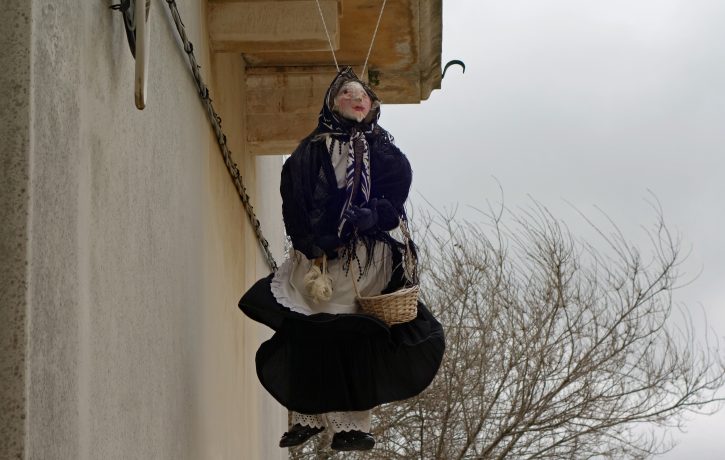
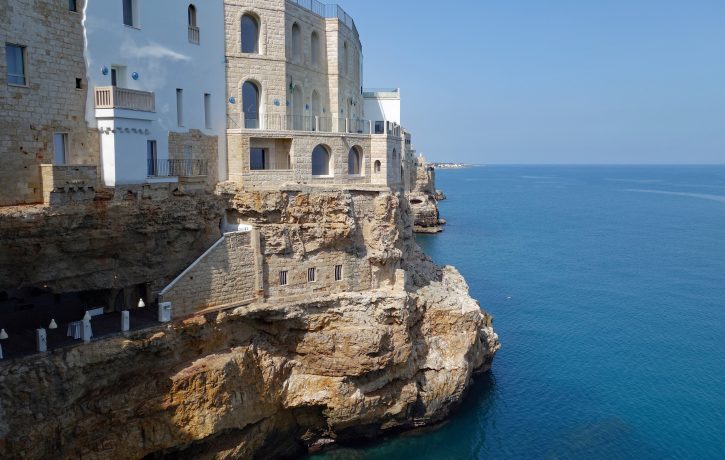
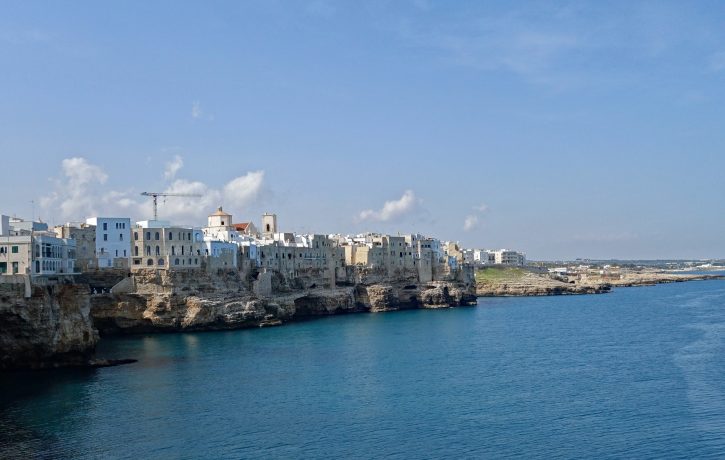
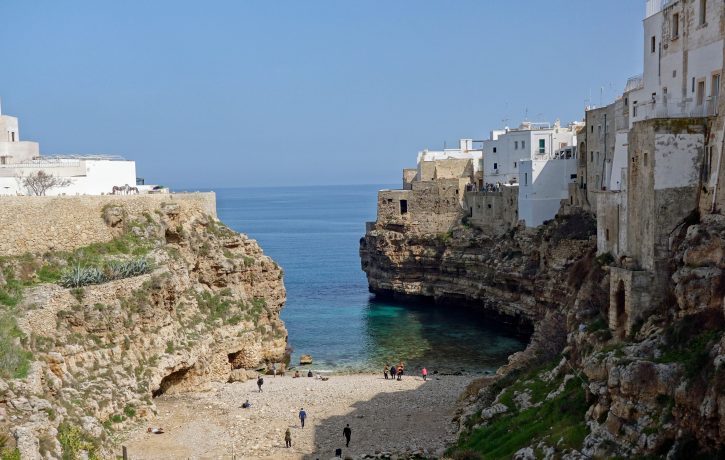
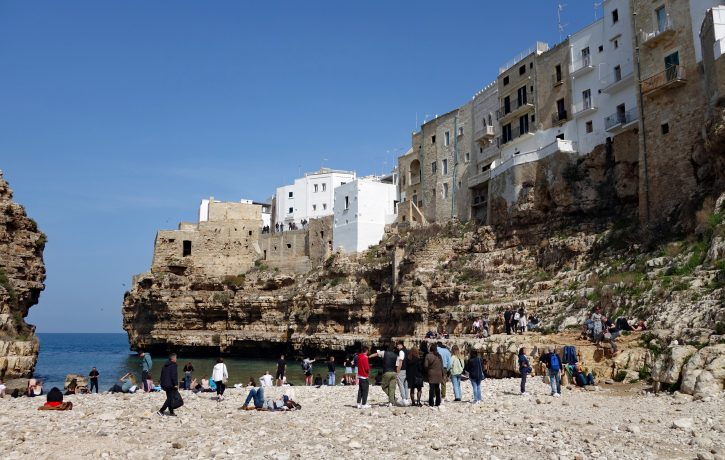
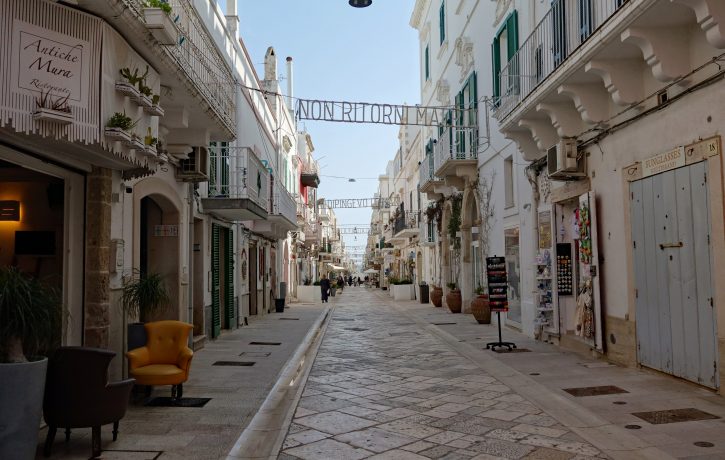
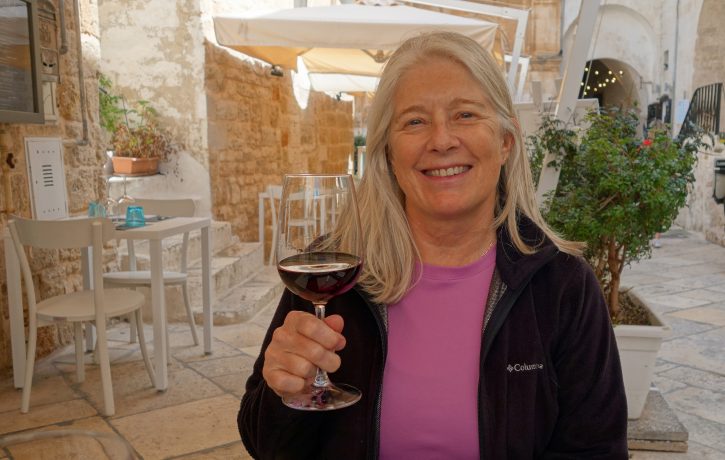
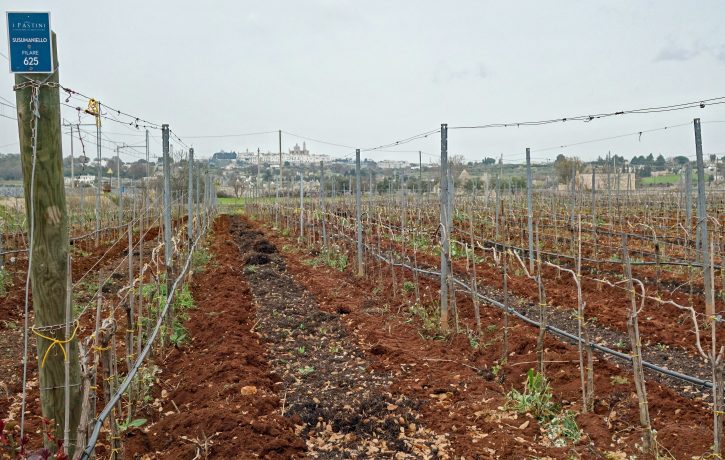
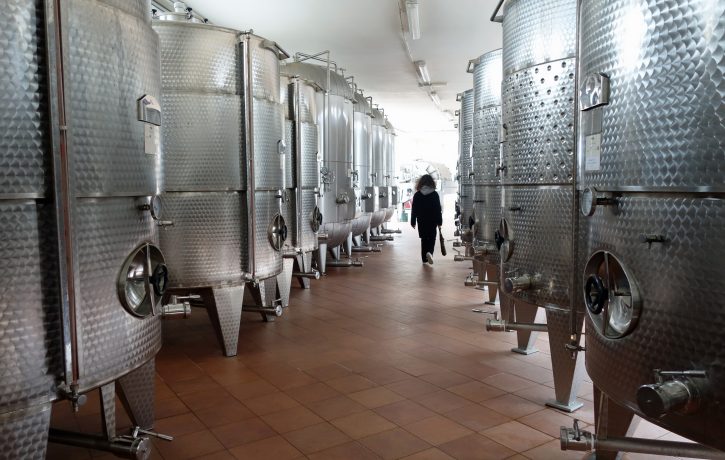
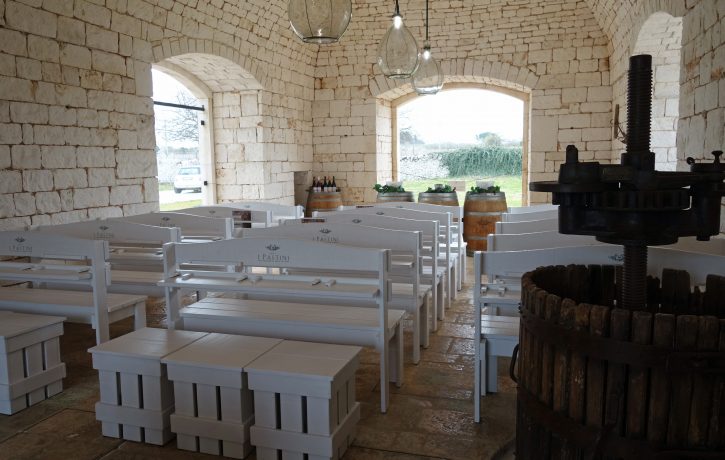
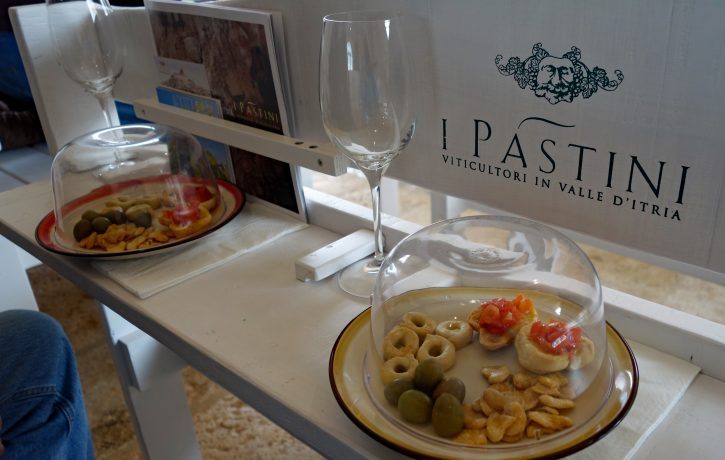
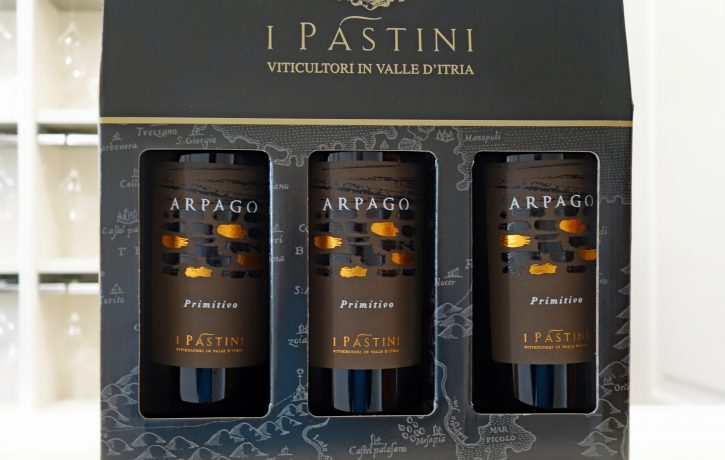
It is all so beautiful! Enjoy!
Thanks Deb, we are certainly enjoying our time in Italy discovering new places 🙂
Thanks for the info, Susan & Blair. We’ll be there the end of July, so will use your input. Good luck on the next phase of your Europe travels!
Thanks guys! Best wishes for your travel planning and enjoy your Europe travels as well 🙂 It’s getting busy over here but Italy is amazing as always.
So glad to read this. We are spending a month in the area in May, but staying 1 , 2 nights in most of the main towns. Good tips for the trip. We will ne using public transport. We can’t wait. I get withdrawal symptoms if I dont visit Italy for a long time, lol.
Thanks! Enjoy your month in Puglia, hope you can make it to the West Coast, I hear it is beautiful over there. Ha ha, totally agree about withdrawal symptoms if away from Italy for too long.